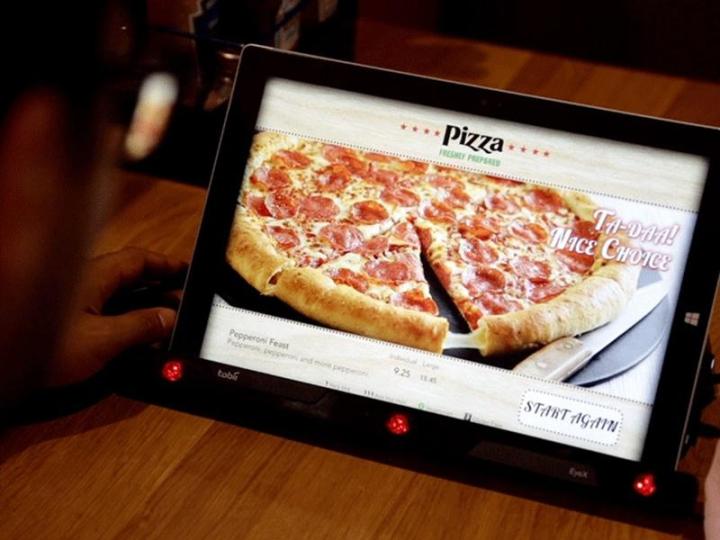
You won’t be able to head down to your local eatery and start scanning right away though, because the tech is still in development; nevertheless, it’s an intriguing glimpse at how the ordering process may one day work in your favorite restaurant, and Pizza Hut is using the label ‘the Subconscious Menu’ for its new gadgetry.
“We wanted to try a few ideas on the traditional menu format,” Pizza Hut Head of Marketing Kathryn Austin told the Telegraph, “and we’re delighted to have developed the world’s first Subconscious Menu, a unique way to reinvent the dining experience.”
There are some clever calculations going on behind the scenes that can help work out what you’re most interested in, even if you’re not sure yourself (hence the ‘Subconscious’ name). The menus are stripped-down, icon-based digital screens that feature 20 of Pizza Hut’s most common toppings — after just 2.5 seconds, the tablet-style gadget is able to pick your favorite topping mix out of nearly five thousand combinations.
You still get the option to view and confirm your choice, so there’s no danger of having something you didn’t want thrust upon you. Pizza Hut has send the technology could eventually be rolled out to restaurants, but there’s no fixed time scale.


